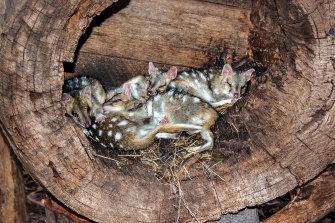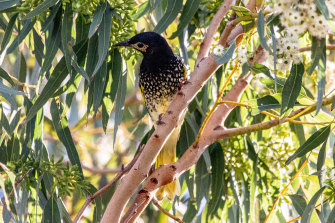
Victoria’s native animals and natural landscapes are in a state of serious decline, as population growth and land clearing put ecosystems under pressure and climate change causes more extreme natural disasters such as bushfires.
A wide-ranging state government inquiry into the state of health of Victoria’s environment has found clearing of native vegetation and the creep of invasive species are threatening the state’s biodiversity.

Land clearing and climate change are contributing to the decline of Victoria’s native animals. Eastern quolls are endangered.
There are significant declines in the number of native plants and animals, and those already listed as threatened are not being properly protected, the inquiry found. Invasive weeds and feral animals now live in all terrestrial and aquatic environments across Victoria and are a key reason for the declining health of the state’s ecosystems.
And while the government’s diversity strategy sets important goals around protecting threatened species, its agencies lack the funding to implement them.
“Within just a few generations, once-common animals and plants are slowly disappearing, confined to smaller and smaller pockets of intact habitat,” said Matt Ruchel, executive director of the Victorian National Parks Association. “Ecosystems, the fabric of life, are in the process of collapse before our eyes.”
The inquiry heard evidence that only a small number of species listed as threatened have government action plans, despite this being a mandatory requirement under Victorian law.

The critically endangered Regent honeyeaterCredit:Mark Gillow
Environment monitoring and data is too patchy to accurately identify the extent of species in decline, and the distribution and abundance of pest species is poorly understood. As a matter of urgency, these initiatives should be properly funded, the inquiry was told.
Climate change is driving more frequent and severe bushfires in Victoria, which are devastating native animals and threatening the viability of the state’s mountain ash forests, rainforest and sensitive plants.









 Add Category
Add Category